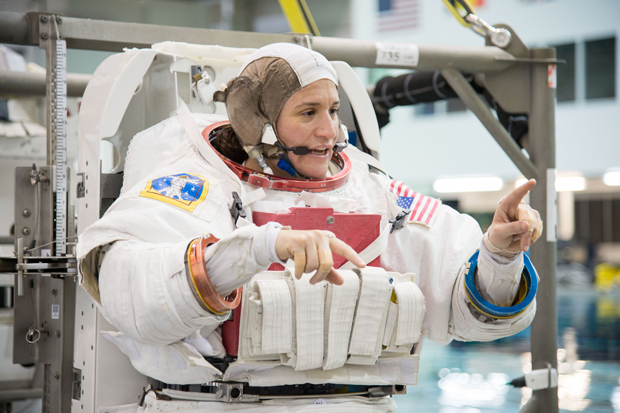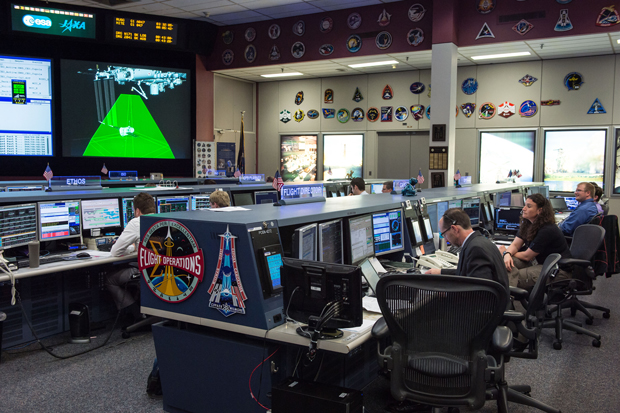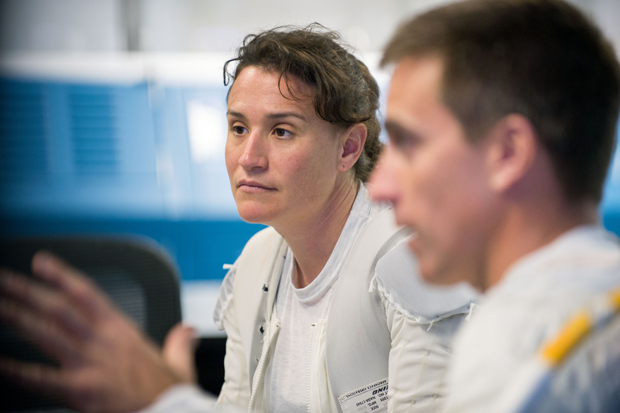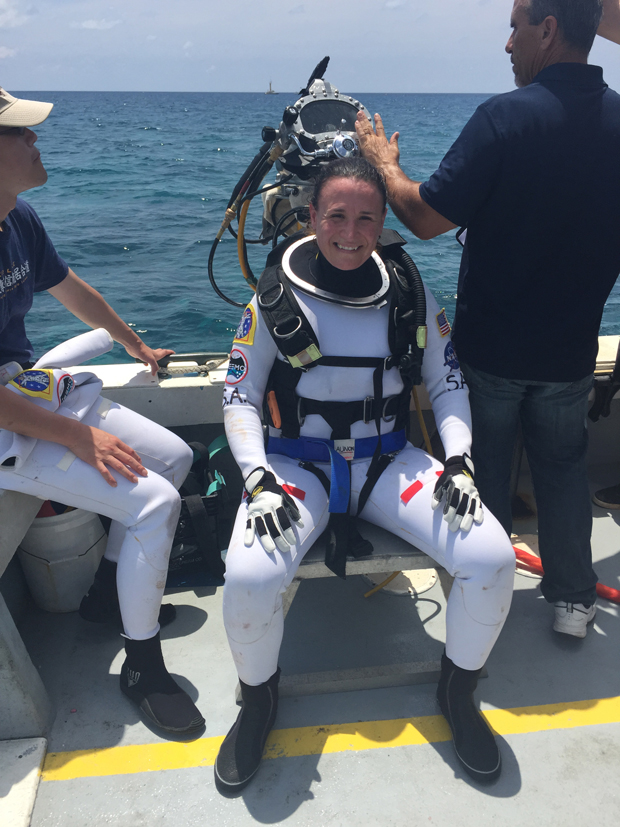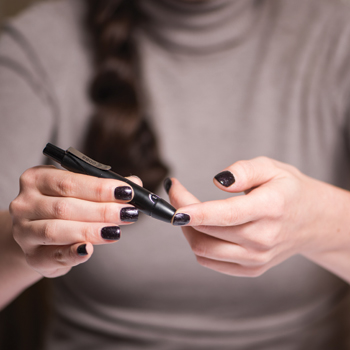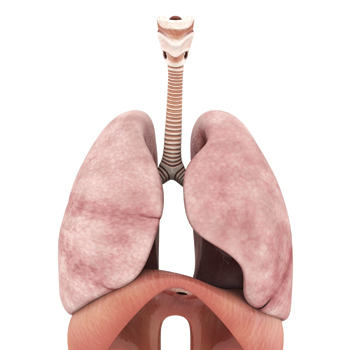Internal medicine heads to outer space
An ACP Fellow is headed to outer space to spend six months aboard the International Space Station.
Astronaut. Aquanaut. Arctic explorer. Internist. Serena M. Auñón-Chancellor, MD, FACP, has done it all.
“Since I was as small child, five or six, I wanted to be an astronaut,” she said. Her parents advised her that if she wanted to work for NASA, engineering would be a good route to take, so that became her major at The George Washington University in Washington, D.C. Between her sophomore and junior years, her friends in the university's pre-med engineering program encouraged her to consider that curriculum.
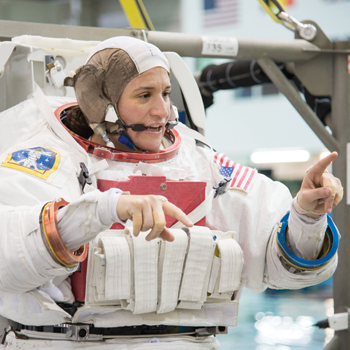
Dr. Auñón-Chancellor graduated from George Washington in 1997 with a degree in electrical engineering and went on to medical school at the University of Texas at Houston, where she took an elective at the Johnson Space Center and learned about a residency that combined internal medicine and aerospace medicine.
“I decided that was the path for me,” she said. “I'd already decided to go into internal medicine, so it seemed perfect to combine those two loves.”
After a three-year residency in internal medicine at The University of Texas Medical Branch (UTMB) in Galveston and an additional year as chief resident, Dr. Auñón-Chancellor completed two more years in her aerospace medicine curriculum. (She also holds a master's degree in public health and is board-certified in internal medicine and aerospace medicine.)
When Dr. Auñón-Chancellor began working with NASA, she was a flight surgeon, which is an old-fashioned military term for physicians who neither fly nor perform surgery. They are the physicians trained in internal medicine, family practice, or emergency medicine who care for astronauts in training and their families.
NASA needs to learn more about the long-term ramifications of space travel for astronauts' health, and Dr. Auñón-Chancellor has researched this topic in her role as a flight surgeon. Still under consideration are questions such as whether surgery can be done in micro- or low-gravity environments and whether each mission should include a physician as part of the team.
“As we push toward a two- to three-year mission to Mars, should we have a physician? And if you have a physician, what sort of physician should that be?” Dr. Auñón-Chancellor said. “I think we should have a physician on every mission.”
During her stint as a flight surgeon, Dr. Auñón-Chancellor spent nine months in Russia supporting medical operations for International Space Station crew members in Star City. “Then, when the next astronaut selection came up in 2009, I threw my hat in the ring and was honored enough to be chosen,” she said.
Dr. Auñón-Chancellor was selected in July 2009 as one of 14 members of NASA's 20th astronaut class. She graduated in November 2011 from Astronaut Candidate Training, which included scientific and technical briefings; intensive instruction about space station systems, spacewalks, and robotics; and training on physiology in space, flight, and water and wilderness survival.
She also spent two months in Antarctica from 2010 to 2011 searching for meteorites as part of the Antarctic Search for Meteorites (ANSMET) expedition. Most of that time was spent living on the ice 200 nautical miles from the South Pole. A team of 13 explorers used snowmobiles to scan the ice for meteorites and explore new areas for future expeditions. They found more than 1,200 meteorites.
In June 2012, Dr. Auñón-Chancellor operated the Deep Worker submersible as part of NASA's Extreme Environment Mission Operations (NEEMO) 16 mission. Astronauts, engineers, and scientists live in an undersea research station 3.5 miles offshore from Key Largo, Fla., 62 feet below the surface for up to three weeks at a time, as an analog for space exploration. She eventually became an aquanaut aboard the Aquarius underwater laboratory during the NEEMO 20 undersea exploration mission. That laboratory's habitat is a testing ground for space exploration; the aquanauts can simulate living in space and practice spacewalks.
From 62 feet underwater and 200 miles from the South Pole, she's next headed into space, 254 miles in orbit aboard the International Space Station. She left the U.S. on April 23 to finish her training in Russia and to become certified on the specific launch vehicle she will use to ascend to the space station. As an astronaut for expedition 56/57, she launches June 6 after spending a two-week quarantine period at the launch site, the Baikonur Cosmodrome, in a Russian enclave of southern Kazakhstan. She will spend 188 days in space, a standard mission length.
As an astronaut, Dr. Auñón-Chancellor's role as a flight surgeon for other astronauts has temporarily ended. On the ground, she and her crewmates now receive care from two other flight surgeons. Once in space, her crew of six has two crew medical officers, but the entire crew, including engineers and pilots, are trained up to a basic EMT level. “If you happen to have a physician as an astronaut, that person receives the same training but is called on a lot more if there is a contingency or medical event on board the station,” she said.
And she, as a physician, is cross-trained to perform the same duties as the rest of the crew. “My days consist of training to do space walks, training in robotics, to use the arm to grab a cargo vehicle. … We learn spaceboard systems, emergency systems. Our days are never the same. … It is intense, and it is busy. Your brain is having to shift from widely varying subjects within five minutes. You get used to that, and you get used to the pace,” she said.
Despite the distances she has travelled and those miles she has yet to go, Dr. Auñón-Chancellor said she stays grounded with family and medicine in her hometown. She still practices general internal medicine among a civilian population through the University of Texas Medical Branch. “It's important to me to remain a practicing physician, because that's what I love,” she said. “That's one of the reasons why NASA hired me in the first place.”

